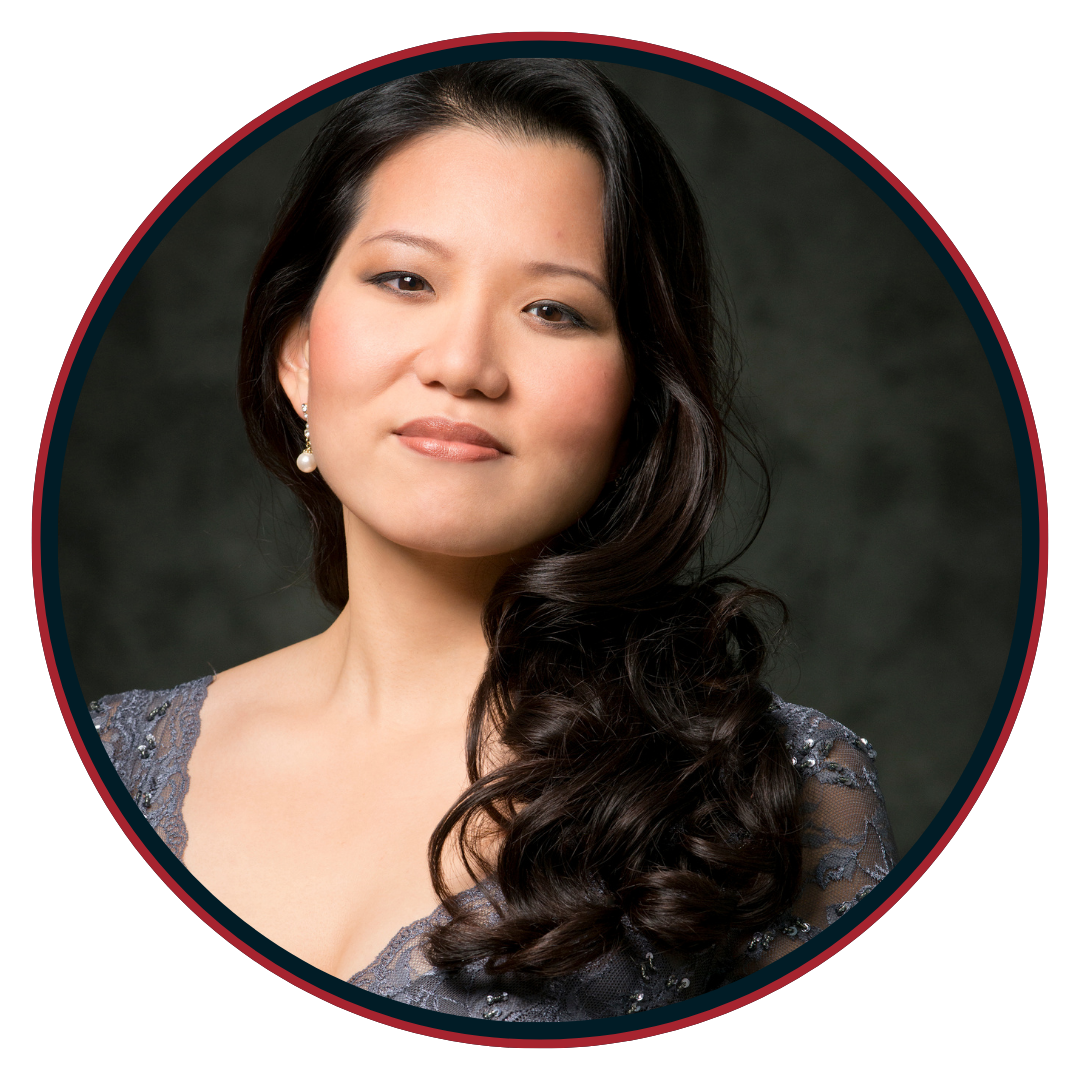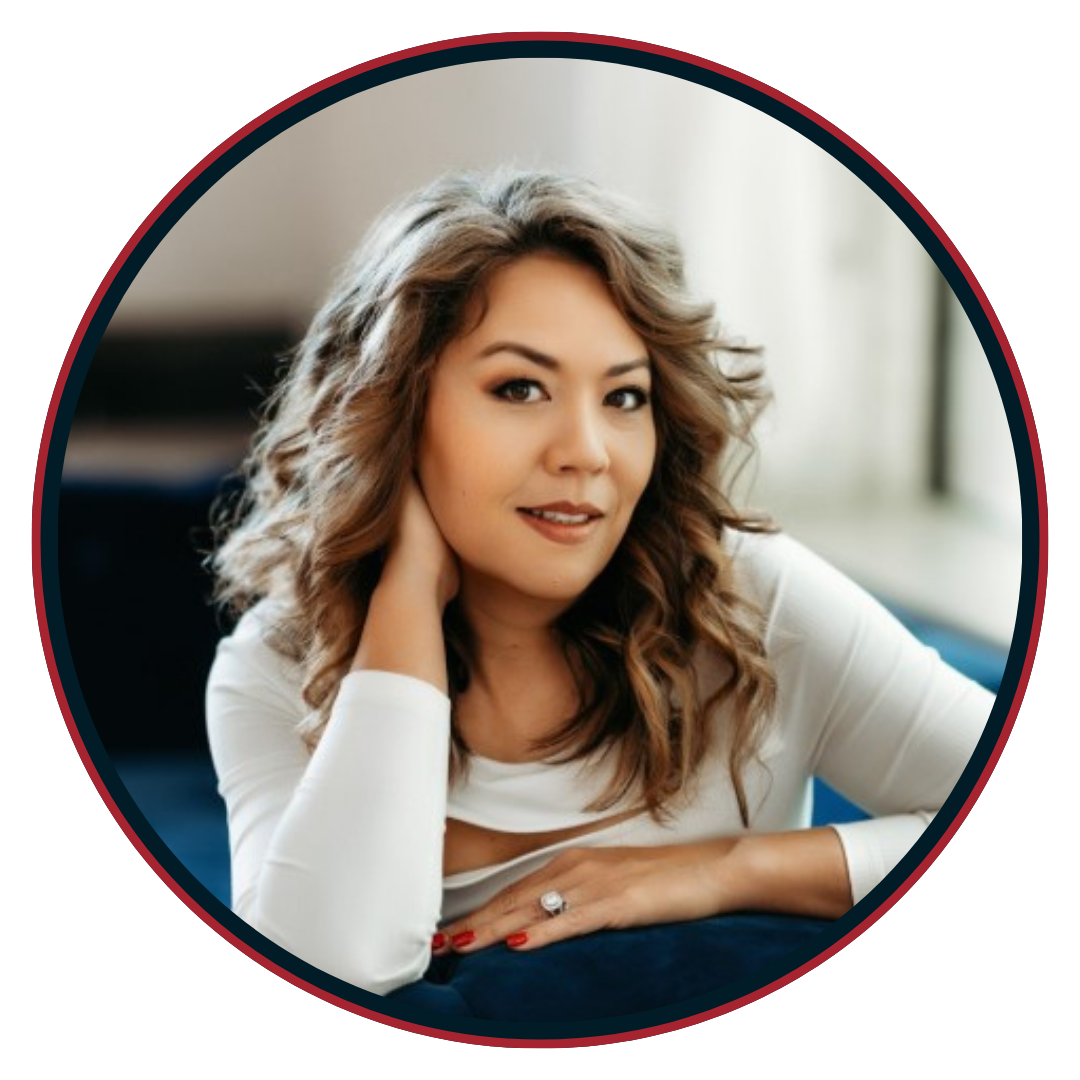
Karen Chia-ling Ho

Jonathan Kaufman

Nina Yoshida Nelsen


James Meena
General Director & Principal Conductor

Dennis Whitehead Darling
Director

Michael Baumgarten
Lighting Designer
Production Team
Set Design, Steven C. Kemp
Costumer, Allison Collins
Technical Director, Wilbert Ferguson
The Story of Madame Butterfly
ACT I. The action takes place in 1900 — Nagasaki Japan, in a house overlooking the harbor. As the curtain rises, preparations are being made for a Japanese wedding between a Lieutenant in the US Navy named Benjamin Franklin Pinkerton, and the geisha Cio-Cio-San, who is also known as Madam Butterfly. Pinkerton inspects the house and the servants he has leased. Like his soon-to-be bride, he has a 999-year contract, that can be renewed, or annulled, month-to-month. When the American consul Sharpless arrives, Pinkerton describes the carefree philosophy of a sailor roaming the world in search of pleasure. When Sharpless warns him that the girl may not take her vows so lightly, Pinkerton brushes him aside, saying that he will one day marry a “real” American wife.
Cio-Cio San is heard in the distance joyously singing of her wedding. Entering surrounded by friends, she tells Pinkerton how when her family fell on hard times she had to earn her living as a geisha. In a quiet moment, Cio-Cio San shows her bridegroom her few earthly treasures and tells him of her intention to embrace his Christian faith. The Imperial Commissioner performs the wedding ceremony and the guests toast the couple. The celebration is interrupted by Cio-Cio San’s uncle, a Buddhist priest who bursts in, cursing the girl for having renounced her ancestors’ religion. Pinkerton angrily sends the guests away. Alone with Cio-Cio San in the moonlit garden, he dries her tears, and she joins him in singing of their love.
ACT II. Three years later. Cio-Cio San waits for her husband’s return. Her maid Suzuki prays to her gods for aid while her mistress stands by the doorway with her eyes fixed on the harbor. Sharpless brings a letter from Pinkerton, that advises him that he will not return to Cio-Cio San, but before the Consul can read the letter to her, Goro enters with the wealthy Prince Yamadori. He tells her that Yamadori will take her as his wife, but she dismisses them both, insisting she is still married. Left alone, Sharpless again starts to read the letter. He tries to soften the upcoming blow by first asking, “What if Pinkerton does not return?” Her response is to defiantly go to the house and return carrying her blonde hair, blue-eyed son. She tells Sharpless that as soon as Pinkerton knows he has a son he will come back, and if he does not, she would rather die than return to her former life. Sharpless leaves without revealing the full contents of the letter. A cannon shot is now heard from the harbor. Seizing a spyglass Cio-Cio San discovers Pinkerton’s ship entering the harbor. Delirious with joy she orders Suzuki to help her fill the house with flowers. As night falls, Cio-Cio San, Suzuki and the child begin their vigil.
ACT III. As dawn breaks, Pinkerton has not returned. Suzuki insists that Cio-Cio San rest. Humming a lullaby to her child, she carries him to another room. Before long, Sharpless enters with Pinkerton and his new wife, Kate. When Suzuki realizes who the American woman is, she collapses in despair. They convince Suzuki to help them persuade Cio-Cio San to give up the boy, so he can have a better life in America.
Pinkerton bids an anguished farewell to the scene of his former happiness. Filled with remorse, he rushes back to his ship. Cio-Cio San enters expecting to find him, but finds Kate instead. Shattered by the truth, Cio-Cio San agrees to give up her child only if Pinkerton himself comes for him. Sending everyone away, she chooses to die with honor rather than live in disgrace. As she dies, Pinkerton is heard calling her name.
Know Before You Go!
“While in London in 1900, Puccini attended a performance of American theatrical producer and playwright David Belasco’s one-act play Madame Butterfly, which recounted the tale (derived from a short story of the same name by American author John Luther Long) of a Japanese girl’s ill-fated love for an American sailor. Although he knew no English, Puccini responded to the play’s poignancy and asked his publisher, Giulio Ricordi, to obtain the story’s operatic rights. Early in 1901 the composer and his favourite librettists, Illica and Giacosa, with whom he had previously worked with success on Manon Lescaut, La Bohème, and Tosca, set about creating Madama Butterfly.
Puccini and his librettists took steps to introduce an element of realism into the new opera. Illica even traveled to Nagasaki to investigate local colour, while Puccini set about researching Japanese music. He visited with the wife of the Japanese ambassador to Italy, who sang Japanese folk songs to him. She also acquired for him sheet music for further study. Puccini’s music for the opera reflects what he had learned and even makes a few direct references to the Japanese songs he had been exposed to. To delineate the American characters, Puccini often used a bluff forthright manner of expression, and he occasionally worked in bits of “The Star-Spangled Banner.”
For all his care in composing the opera, Puccini was stunned at its reception. The opening-night audience openly jeered, booing and hissing throughout the performance. Madama Butterfly’s Japanese theme was mocked, and its tragic heroine was derided as a secondhand copy of Mimì from La Bohème. Puccini withdrew the opera from performance after opening night, but he was not discouraged. Perhaps he was aware that jealous rivals had filled the house with their own noisy supporters. Nevertheless, he and his librettists began extensive revisions, most notably dividing the opera’s overly long second act. The new Madama Butterfly, which reached the stage in Brescia, Italy, on May 28, 1904, was a great success. Two more revisions would follow, in 1905 and 1906, before the opera reached its definitive form. All versions included “Un bel dì,” which remains one of the best-known arias in the soprano repertoire.”
Cantoni, Linda and Schwarm, Betsy. “Madama Butterfly”. Encyclopedia Britannica, 13 Sep. 2023, https://www.britannica.com/topic/Madama-Butterfly. Accessed 10 November 2023.
Parking Information
A special preferred parking rate of only $10* is available for our patrons in the Bank of America Center Parking Garage.
- Entrances at: 150 N. College St. and 290 E. 5th St.
The $10 rate is applicable when parked in the garage after 5pm on weekdays, Monday-Friday. If parked in the garage before 5pm, the $10 rate is void. There is no time restriction for the weekend, Saturday and Sunday.
GETTING AND USING YOUR PARKING PASS WHEN YOU ARRIVE
- Pull the garage entry ticket when you arrive at the designated garage. You will need this to exit!
- Purchase a $10 Blumenthal exit pass at the theater or click here to purchase in advance online. If you would rather purchase by phone, please call 704.372.1000.*
WHEN YOU EXIT
- Insert your garage entry ticket into the yellow slot. Amount due will display on the screen.
- Insert your Blumenthal exit pass in the same yellow slot, with the arrow pointing at slot.
- Gate arm will rise and the screen will display “drive safely.”
*Pre-paid parking is not available day of show.
PURCHASE YOUR PARKING EXIT PASS IN ADVANCE
Bring your pre-purchased parking pass with you to the show and exchange for an exit pass or purchase your exit pass at the box office or parking stations at the show.
The Belk Theatre
430 South Tryon St.
Levine Center For The Arts
Charlotte, NC 28202




